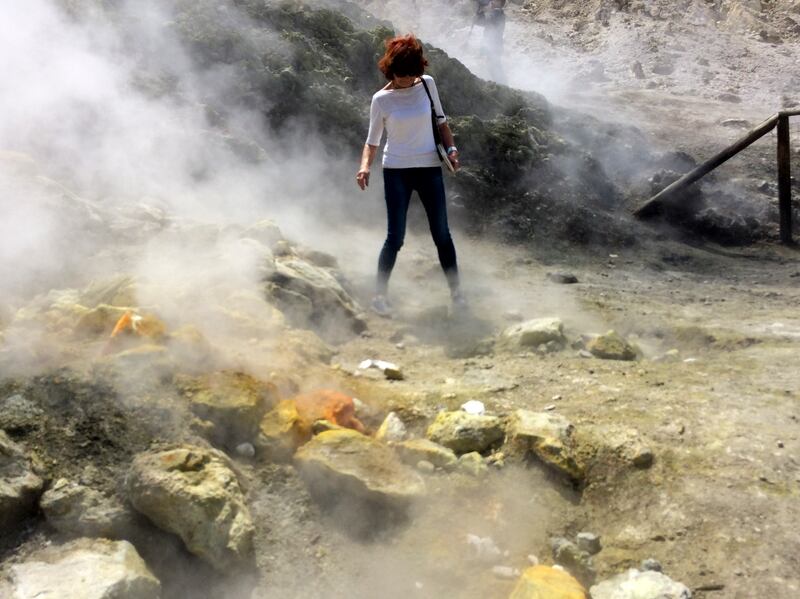In recent months, people who live at the base of supervolcano Campi Flegrei in a town known as Pozzuoli near Naples, Italy, have been shaken by rumblings and the fear of a possible eruption.
Campi Flegrei’s caldera spans 12 to 15 kilometers (about 7.5 to 9 miles) across, making it the largest active caldera in Europe, according to a 2023 article published in the journal Communications Earth and Environment.
Campi Flegrei is about 28 miles away from Pompeii, where Mount Vesuvius famously erupted in 79 C.E.
Christopher Kilburn, author of a study on Campi Flegrei and professor of volcanology and geophysical hazards at University College London, told NBC News that research suggests that recent seismic activity is weakening the Earth’s crust and making it more prone to rupturing.
More than 2,500 earthquakes have trembled through the area since August and they continue this month, reported The Wall Street Journal.
A local fisherman told the Journal, “We’re used to it, but that doesn’t mean we aren’t afraid.”
The stirrings around Campi Flegrei have prompted Italian officials to come up with an evacuation plan if the volcano erupts, which residents say they know won’t work because of the cramped streets, per the Journal.
So the town’s 500,000 residents — and another 800,000 people who live nearby — are watching and waiting.
When did Campi Flegrei last erupt?
Campi Flegrei last erupted nearly 500 years ago in 1538, scientists say, after a previous dormant state of 3,000 years, per 2011 research published in Quaternary Science Reviews.
The last period of increased seismic activity was more recent — in the 1980s, Kilburn told NBC News.
How likely is Campi Flegrei to erupt?
Even with the recent earthquakes and the release of sulfuric gases that are common in Pozzuoli these days, Kilburn said that it doesn’t necessarily mean that Campi Flegrei will erupt, per NBC News.
“If there’s a rupture, there is no guarantee that magma is going to erupt,” he said. “And that’s why with the observatory there, the official releases cover anything from just an increase in seismicity through to a small eruption because we can’t really tell where we are in that just yet.”
A geology professor at the University of Napes Federico II, Alessandro Iannace, told The Wall Street Journal that while the chances of a catastrophic eruption are low right now, they aren’t zero.
What happens if the Italian supervolcano erupts?
The main point of concern, Iannace explained to The Wall Street Journal, is the traffic jam that would occur during an evacuation.
“The difference is that in Yellowstone, if you think the eruption is coming, you can send the tourists home and close the park for four years,” Iannace told the Journal. “You can’t do that with Campi Flegrei. There are just too many people there.”
Are there supervolcanoes in the U.S.?
The caldera located in Yellowstone National Park is one of the most famous supervolcanos in the world. It’s significantly larger than the Campi Flegrei caldera, according to the U.S. National Park Service.
In addition to the one in Yellowstone, two other supervolcanos are found in the United States: Long Valley in eastern California and Valles Caldera in New Mexico, per the U.S. Geological Survey.


